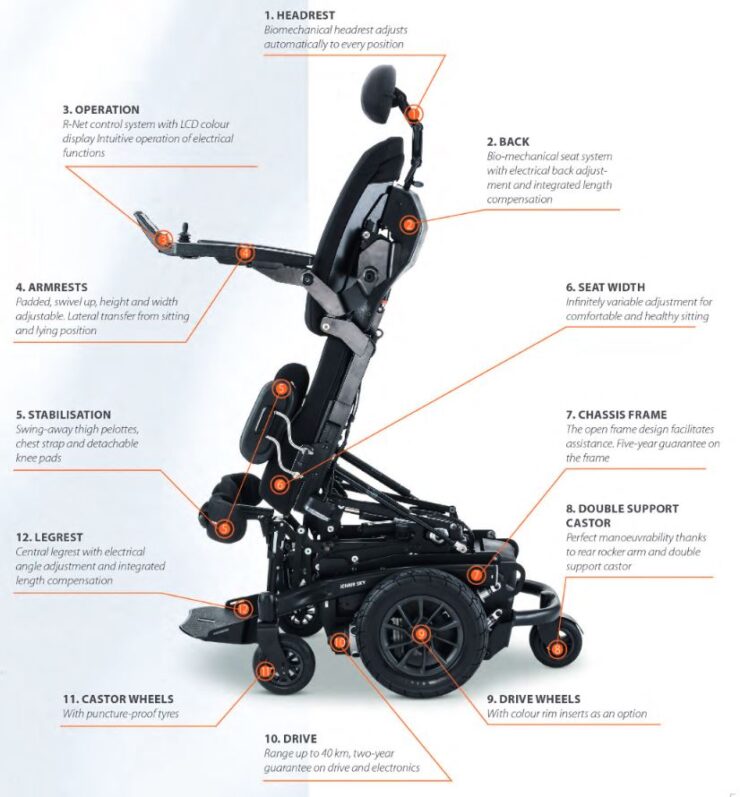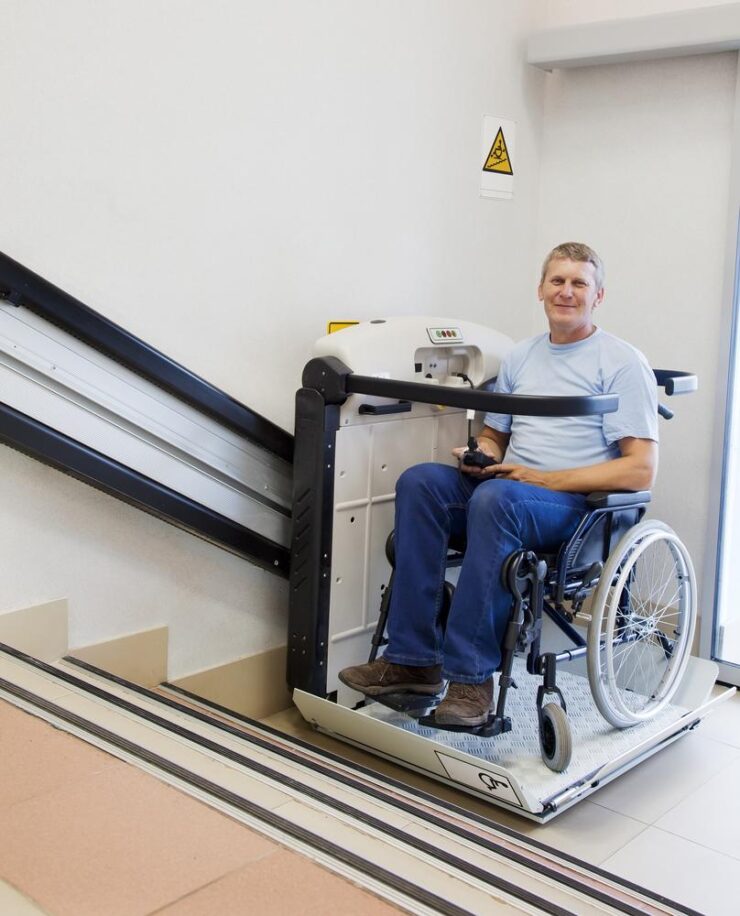It is common knowledge that the design of some public spaces is not particularly friendly to people with limited mobility. They have complex layouts and mechanical barriers, making it difficult for these people to have access to recreational facilities, transportation systems, and other facilities.
But in come wheelchair seat lifts! Wheelchair seat lifts are assistive devices that afford people with mobility challenges the opportunity to access places with complex layouts or barriers in their wheelchairs. With these lifts, they can navigate locations with raised platforms, staircases, and uneven terrain.
Wheelchair lifts are adaptable to homes and public spaces. By removing the barrier of accessibility, these devices promote freedom of movement, inclusivity, and self-empowerment.
Ever wondered how wheelchair lifts work? Let’s walk you through the mechanism of the lifts, the different available options, and, most importantly, how to find the ideal one for you.
Operation of A Wheelchair Seat Lift
The operation of a wheelchair seat lift involves a series of steps that ensure the user’s safety and comfort. To use it, the user positions their wheelchair near the area they want to access, i.e., a car. Then, they activate the lifting process by pushing the control system, which is either attached to the wheelchair or a remote control. When the command is sent, the lift mechanism is activated and raises the wheelchair’s seat.
When the desired height is reached, the control button is pushed, and the lift comes to a halt. For some automatic lifts, it stops once it gets to its maximum height. At this point, the mover can now move from the chair to the area they want.

Wheelchair Seat Lift Types
There are two major kinds of wheelchair seat lifts: Vertical Platform Lifts and Inclined Platform Wheelchair Lifts.
1. Vertical Platform Lifts
This kind of seat lift is also known as VPLs, and it is designed to transport wheelchair users in upward and downward movements between elevated levels. In other words, the lift goes up and down in a vertical position, as in the case of an escalator.
An electric linear actuator is perfect for this. Once it is installed on the wheelchair seat, the actuator’s rod extends to raise the chair and retracts to lower it.
2. Inclined Platform Wheelchair Lifts
An inclined platform lift moves in a diagonal position rather than in a straight line. This lift is ideal in situations where there are staircases or sloped surfaces for a wheelchair to travel across.

Other Ways Actuators Are Used in Wheelchairs
Actuators in wheelchairs meet different needs and specifications. Here are two ways below.
1. Recline Actuators
Recline actuators are devices used in reclining wheelchairs that make it possible to achieve the reclining function. These actuators control the backrest of wheelchairs to incline backward at determined angles.
One primary advantage that recline actuators give wheelchair users is posture management, which in turn relieves back stress. At the end of the day, this not only ensures blood circulation, but it also removes the risk of getting sedentary life-related ailments like pressure sores.
2. Tilt Actuators
The presence of tilt actuators in wheelchairs lets the chair incline forward and backward to a certain angle. Tilting of wheelchairs provide users with postural support and an avenue for weight distribution.
To control the tilt movements, tilt actuators use mechanisms like hydraulic pistons, gas springs or electric motors.

Benefits of an Elevated Wheelchair Seat
In a country where 12.1% of its adult population has a mobility disability, one thing is certain – an elevated wheelchair offers great benefits. Some of these benefits include:
1. Increased Mobility and Accessibility
Elevated wheelchairs expand the mobility options of users. That way, they can access a larger part of their communities that they would otherwise not be able to, like shopping malls, transport systems, etc.
2. Self Reliance
Being able to move about with an elevated wheelchair promotes a sense of independence and self-reliance in users. It allows them to reach higher surfaces, like the top of a fridge, without having to strain themselves or rely on the assistance of others.
3. Physical Well-being and Social Benefits
When people with disabilities are able to go about their daily activities with little or no assistance from carers, it boosts their self esteem. It is also easier for them to hold conversations at eye level in social gatherings This necessarily eliminates the physical strain on their shoulders and upper bodies that would result from constant stretching.
4. Ease of Transfer
Elevated wheelchairs also help ease the transfer of individuals between positions of differing heights. For instance, moving from the wheelchair to the bed, couch, or toilet seat This is particularly helpful when home modification is not feasible.
5. Overall Health and Well-being
Elevated wheelchairs allow for adjustable seat heights and angles, which lets users move their weight around and stretch their feet. The effect of this is enhanced blood circulation and a reduced risk of muscle atrophy, pressure sores, and other ailments that could result from a sedentary lifestyle.

Checklist for Finding the Perfect Wheelchair Lift
There are different kinds of wheelchair lifts, and to find the best one, there are some considerations you should take into account.
1. Lift Specifications
First, you must ascertain the specifications so that the wheelchair lift can conveniently meet your needs. You should consider factors like the intended surface to use it on (whether sloppy or vertical), the weight to be carried, size of the lift in proportion to the available space, etc.
2. Safety Features
The safety measures integrated into a wheelchair seat lift are one factor you cannot overlook when choosing a lift. Although safety features might not be uniform across lifts, a standard wheelchair lift should have safety straps, obstacle detection, smooth lifting and lowering mechanisms, and compliance with safety guidelines.
3. Installation Requirements
Research the space that a lift would require to be installed and the available space. Ensure that the lift can fit into the installation area, especially if you’re not looking to make significant modifications to the designated area.

The Firgelli Actuator Wheelchair Solution
Using Firgelli actuators, you can create an electric wheelchair lift with all its inherent benefits. For mobility applications, Firgelli Automations provides a variety of robust, high-powered electric linear actuators that are suitable for both outdoor and indoor settings. All our actuators are thoroughly tested and comply with all industry regulations.
We manufacture a wide range of actuators. Depending on your specifications, we can design and manufacture a custom actuator for your application. As a leading supplier of wheelchair actuators, we design our products with the requirements of the end user in mind. Our wheelchair actuators are engineered to provide precise movement, and the mechanism is designed to operate with minimal disturbance. Want to find out more? Send us a message and a representative will be in touch!

